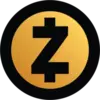Notice: Due to the hack in February and other recent issues XeggeX is shutting down and filing for insolvency. More information and legal contacts will be provided soon.
Max Supply: 0
Circulation: 2,422,117.452
Market Cap: $101,607,827
Listing Date:
2022-04-22, 07:47:20
Network:
Zcash Main Chain
Asset Type:
Coin
Links
Social
Primary Markets (0 active)
Total Market Volume: ~$0
Liquidity Pools (0 Active)
Total Pool Liquidity: ~$0
| Market | Volume |
|---|
Hot Wallets
Deposit
Block #2981676 @ 4.41 min ago
Balance: 0.00215000
Updated: 0.24 min ago
Withdraw
Block #2980786 @ 1113.34 min ago
Balance: 1.08840790
Updated: 1112.86 min ago
About Zcash
Zcash (ZEC or ⓩ), also known as Zerocash, is a decentralized digital currency with privacy at its core. The asset comes in two forms: shielded and transparent. Although transaction data is posted to the blockchain like Bitcoin, a shielded protocol allows transactions to be verified without revealing the sender, receiver, or transaction amount. The zero-knowledge proof constructions leveraged by Zcash are called zk-SNARKs (which stands for Zero-Knowledge Succinct Non-interactive Arguments of Knowledge).Zcash includes selective disclosure features which allow users to reveal a degree of transaction information for compliance or audit purposes. It is also possible to execute completely transparent transactions to accommodate wallets and exchanges that do not support the privacy features.According to the website, the platform was built by top cryptographers based on the research of scientists from MIT, Technion, Johns Hopkins, Tel Aviv University, and UC Berkeley. It was founded by Zooko Wilcox (born Bryce Wilcox) who also founded the Zerocoin Electric Coin Company, and created the Zerocoin protocol between 2013 and 2014. Zcash operates at the bleeding-edge of cryptography, requiring and producing novel research which is then freely shared with the rest of the ecosystem, including competitors.Released in October 2016, ZEC is similar to Bitcoin in that it has a fixed total supply of 21 million units and its mining reward is cut in half roughly every four years. Initially, 50 ZEC is created every ten minutes. Of the newly created ZEC 80% goes to the miners, and 20% to founders, employees, and investors - dubbed ‘the founder's reward’. It aims to discourage pump and dumps during the first few years of operation. For Zooko this represents an annual incentive of around $4.2M based on an exchange rate of $170/ZEC.After four years, the number of ZEC created every ten minutes will drop to 25, but 100% of it will go to the miners. The end result is that of the total ZEC, 10% (or 2.1 million) will have been distributed to the founders and early stakeholders.Developers have criticized the security of Zcash, in particular, the ‘ceremony’ which created the zk-SNARK public parameters; this involved six participants who created individual “shards” of the private/public key-pair and then burned them to DVDs. Participants followed a document called “Zcash Multi-party Computation Instructions” to create the shards.The document provided technical requirements for the hardware used, as well as instructions for downloading the required software and burning the shards to DVDs. The participants then allegedly destroyed their shards of the private key and combined the shards of the public key to create the zk-SNARK public parameters. It is said that all the computers involved were subsequently destroyed to prevent anyone gaining keystroke information.Technologists argue that there is no proof that participants did not conspire to keep the public key, or that cameras, radio signals or satellites could have been used to retrieve keystroke information.
Stable Connection


